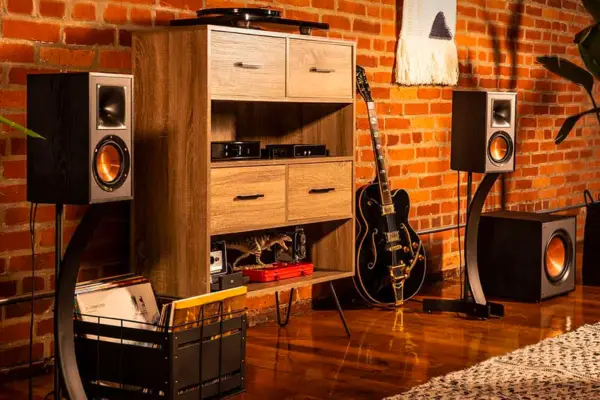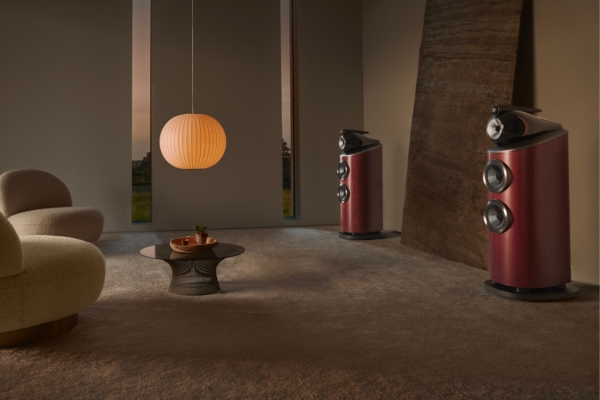A Guide to Choosing The Best Wireless and Bluetooth Speakers
Bluetooth and WiFi-connected speakers are revolutionizing how we experience music. The beauty lies in their ability to deliver exceptional sound quality without the hassle of tangled wires.
When selecting a speaker, it’s crucial to consider your speaker needs. Are you looking for some speakers for beach parties or backyard barbecues? Then a water-resistant speaker with a robust rechargeable battery is your go-to option. For those with sprawling homes, a speaker that integrates into a multiroom system might be more suitable.
Don’t forget, the design of a speaker is as important as its functionality. In today’s market, manufacturers are crafting speakers that are not just functional but also visually striking. They’re designed to be conversation starters, that blend seamlessly into your decor, or of course standing out as a bold statement piece.
In this guide, we focus on the technical aspects of wireless and Bluetooth speakers, understanding that while aesthetics are subjective, sound quality and functionality are crucial.
The Dilemma: WiFi or Bluetooth Speakers—or Perhaps Both?
There are two main types of wireless speakers: WiFi and Bluetooth.
WiFi speakers connect seamlessly to your home network but often require a power outlet since most run on AC power. Bluetooth speakers, on the other hand, offer direct pairing with devices like smartphones or laptops and are generally more portable due to their battery-powered design. And of course, some models offer the best of both worlds, featuring both WiFi and Bluetooth connectivity.
Bluetooth Speakers: A Closer Look
Bluetooth technology is the backbone of most portable speakers, facilitating music streaming from devices like smartphones or laptops.
Pros: Bluetooth is universally compatible with a myriad of devices, including iPhones and Android smartphones, and is generally more affordable than WiFi speakers.
Cons: The technology has its limitations, typically offering a range of around 33 feet.
Setup: Bluetooth scores high on simplicity. And some models now incorporate NFC technology, allowing for instant connectivity with a simple tap.
WiFi Speakers: Advancing Your Home Audio Experience
WiFi speakers tap into the strength of your home network, usually offering a more stable and robust signal.
Pros: This technology shines when streaming to multiple speakers simultaneously. It has a range that often exceeds Bluetooth, reaching up to 200 feet in some cases.
Cons: Your listening experience might be impacted by the overall network bandwidth usage.
Setup: Setting up a WiFi speaker usually involves a smartphone app and a series of steps, including network selection and password entry.

Combining the Best of Both Worlds: Bluetooth and WiFi Speakers
Some top-rated speakers in our tests come equipped with both WiFi and Bluetooth capabilities.
Pros: This combination offers unparalleled flexibility. You can leverage your robust home network for everyday use, while Bluetooth provides a quick and easy connection for guests wanting to share their music.
Cons: The only drawback might be the price, as speakers with both features tend to be more expensive.
Setup: The setup processes for both Bluetooth and WiFi might be a bit more awkward.
Ultimately, the choice of a wireless or Bluetooth speaker boils down to your personal needs and preferences. Whether you prioritize portability, sound quality, design, or connectivity options, there’s a speaker out there that’s just right for you.
Tailoring Your Wireless or Bluetooth Speaker Choice to Your Listening Environment
Whether its Bookshelf Speakers, Tall Standing Speakers, or Wireless Speakers for all occasions, you need to tailor your setup to suit your listening environment.
Outdoors Adventures and Bluetooth Speakers
Outdoor settings demand a certain versatility from your speaker. Imagine a portable Bluetooth speaker that complements your outdoor grilling sessions with your favorite tunes and then becomes your podcast companion as you relax in your yard.
Opting for a compact model not only saves space on your patio or picnic table but also allows for easy mobility. And for a touch of fun, why not pick a speaker in a vibrant color that matches your outdoor decor?
The great outdoors also brings its share of elements, like pool splashes or unexpected rain showers. In such scenarios, a water-resistant Bluetooth speaker becomes more than just an audio device—it becomes a durable, worry-free companion for all your outdoor escapades.
Indoors: A Different Bluetooth Speaker Strategy
When considering indoor use, assess the practicalities like the proximity of electrical outlets and the strength of your WiFi network if you’re leaning towards an AC-powered WiFi model.
Speaker placement is key to optimum performance. For Bluetooth speakers, maintaining a 33-foot range from your music source is ideal. Remember, Bluetooth connectivity thrives on clear lines of sight, so walls and large objects can disrupt your audio experience with those pesky dropouts.
WiFi speakers, on the other hand, are more adept at handling longer distances and physical barriers. Under perfect conditions, some can maintain a connection even if they’re over 200 feet away from the router, although a range of 100 to 150 feet is more common. You could always take a look at these WiFi Hotspots to ensure you get the perfect connection no matter where you are.

Key Features to Consider in Wireless and Bluetooth Speakers
Your personal audio preferences play a significant role in the choice of your wireless speaker. Here’s what to look out for:
Inputs and Outputs: A versatile wireless speaker will have auxiliary audio inputs for direct connections to devices like TVs or vintage HiFis. Some even feature USB ports to charge your smartphone or tablet, and an optical digital audio input for high-quality connections to media players.
Connectors and Docks: The convenience of connecting your device via a USB cable can be a game-changer, especially to combat wireless connection dropouts. Be mindful of the type of connector your device requires, like a Lightning connector for iPhones or a USB-C for most Android phones.
Remote Control and Voice Recognition: While voice recognition might seem like a futuristic way to control your speaker, it can be unreliable. A standard remote or a smartphone app usually offers a more consistent control experience from a distance.
That said, some newer models are enhancing their voice recognition capabilities, integrating smart-speaker functionalities. It’s worth noting that smart speakers are a distinct category and are often covered separately in reviews like those from Consumer Reports.
Online Music Services Integration: One of the joys of modern wireless speakers is their ability to directly access streaming music services such as Spotify, Amazon Music, and Pandora. This feature adds a layer of convenience, allowing you to enjoy a variety of music without the need for additional devices.
Hands-Free Speakerphone Capability: This is a feature specific to certain Bluetooth models. It enables you to handle phone calls directly through your speaker, adding a practical dimension to its functionality, especially when your hands are busy.

I am a passionate and skilled car audio enthusiast with 15 years of experience in the industry. My journey started when I replaced my first set of factory car speakers, sparking a deep love for high-quality sound. Since then, I have worked as a representative for renowned brands like Kenwood and Alpine.
With a background in both retail and distribution, I have developed a comprehensive understanding of the car audio market. Currently a certified (MECP) installer in the Mobile Electronics industry, my expertise lies in delivering top-notch audio installations. My knowledge, coupled with my genuine passion, makes me the go-to professional for all car audio needs.


